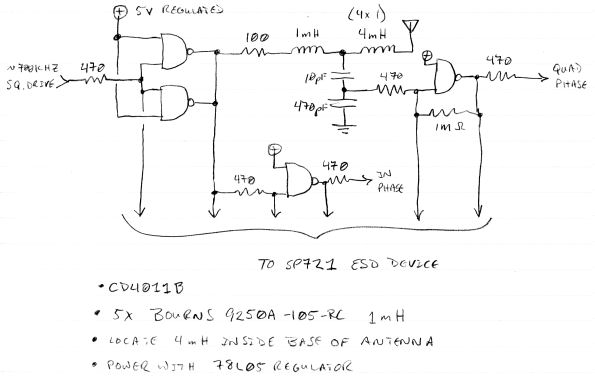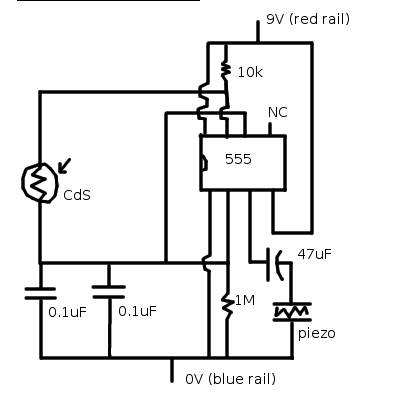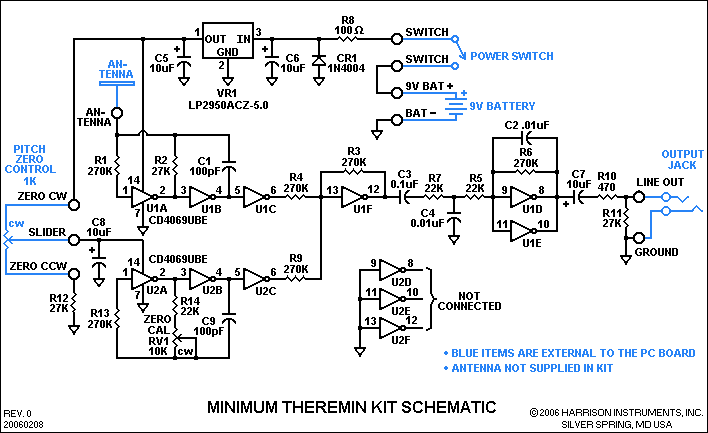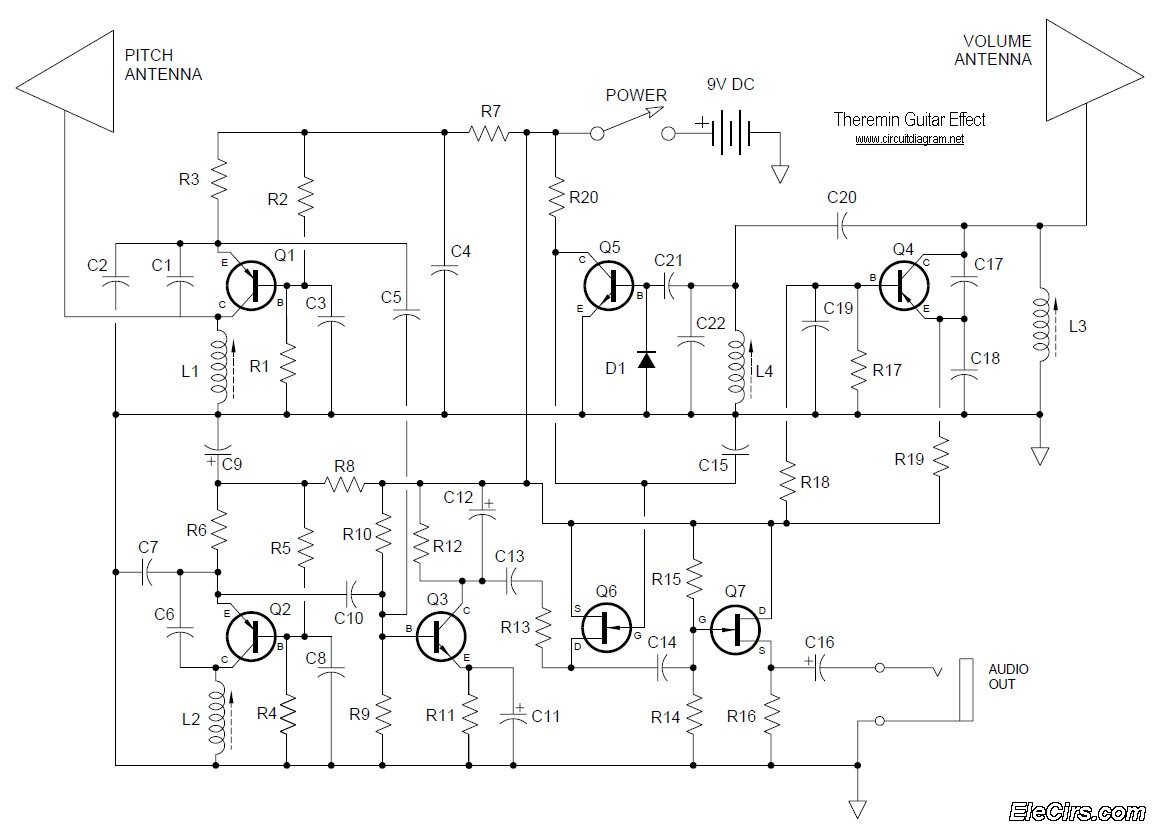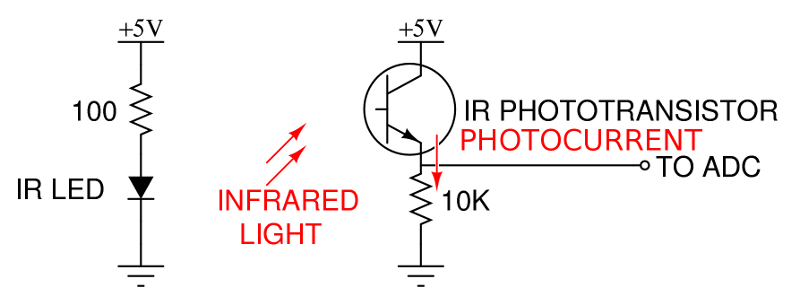
Theremin with ZapperlaserArduino
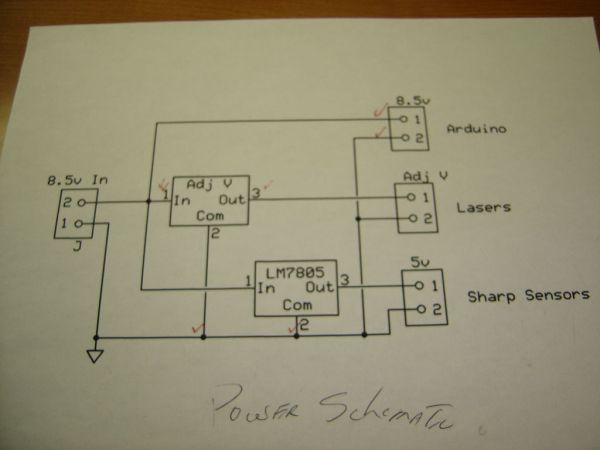
The parts list referenced is from the first page of a Make Magazine article. This list is intended for a harp that utilizes six lasers, so most quantities can be simplified to one.
The schematic design based on the described parts list involves a laser harp assembly that integrates six laser emitters. Each laser is typically paired with a photodetector that senses interruptions in the laser beam, allowing for the generation of sound or control signals when the beam is broken.
The circuit may include a microcontroller to process the signals from the photodetectors, enabling the translation of physical interaction into audio output. The microcontroller can be programmed to assign different tones or functions to each laser beam, enhancing the musical capabilities of the harp.
Power supply considerations are essential; the circuit should include voltage regulators to ensure that each component receives the appropriate voltage levels. Additionally, resistors may be used in series with the lasers to limit current and prevent damage.
The layout of the circuit board should facilitate easy access to all components for maintenance and modifications. Proper grounding techniques must be employed to minimize noise and ensure stable operation.
In summary, the design focuses on a straightforward implementation of a laser harp with a simplified parts list, emphasizing the integration of laser emitters, photodetectors, and a microcontroller to create an interactive musical instrument.Basically I used the parts list that is on the first page of the Make Magazine article. But that list is for the harp which has 6 lasers so most quantites can be just 1. 🔗 External reference
The schematic design based on the described parts list involves a laser harp assembly that integrates six laser emitters. Each laser is typically paired with a photodetector that senses interruptions in the laser beam, allowing for the generation of sound or control signals when the beam is broken.
The circuit may include a microcontroller to process the signals from the photodetectors, enabling the translation of physical interaction into audio output. The microcontroller can be programmed to assign different tones or functions to each laser beam, enhancing the musical capabilities of the harp.
Power supply considerations are essential; the circuit should include voltage regulators to ensure that each component receives the appropriate voltage levels. Additionally, resistors may be used in series with the lasers to limit current and prevent damage.
The layout of the circuit board should facilitate easy access to all components for maintenance and modifications. Proper grounding techniques must be employed to minimize noise and ensure stable operation.
In summary, the design focuses on a straightforward implementation of a laser harp with a simplified parts list, emphasizing the integration of laser emitters, photodetectors, and a microcontroller to create an interactive musical instrument.Basically I used the parts list that is on the first page of the Make Magazine article. But that list is for the harp which has 6 lasers so most quantites can be just 1. 🔗 External reference
